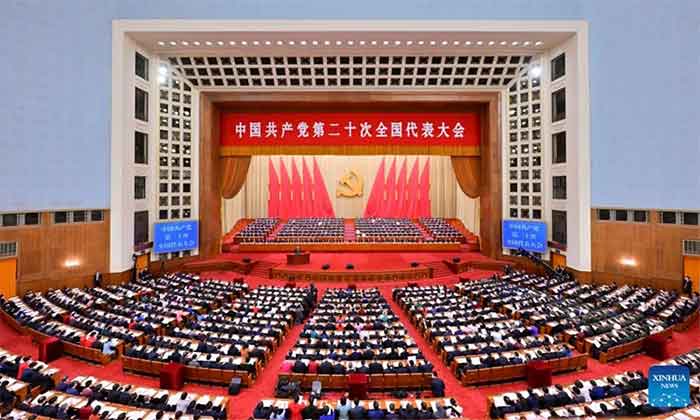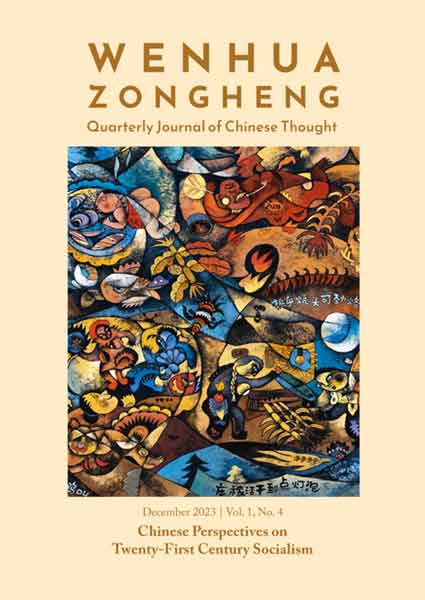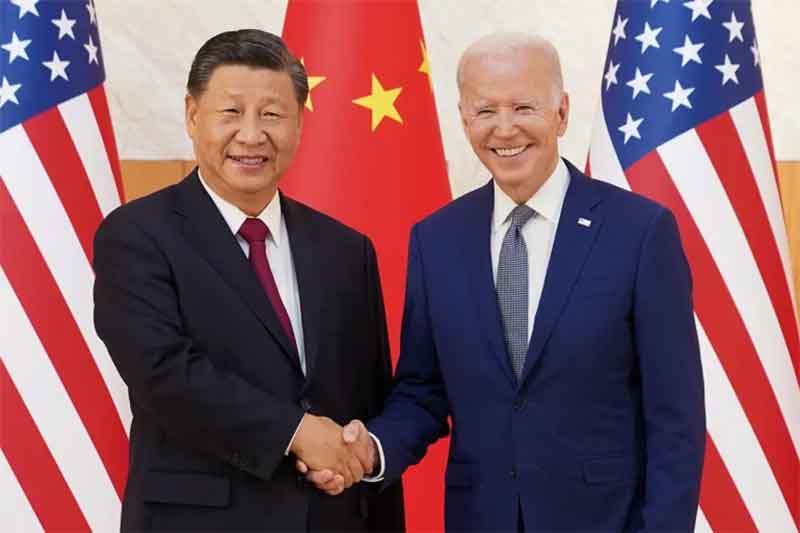
[Presented in the seminar on the “Significance of India China Relations in the Present National and Global Context” at the National conference of India China Friendship Association conducted on October 14-15,2023, Hyderabad]
India and China bloomed with rich ancient civilizations. Both countries-epicentres of philosophy and science – had exchanged their rich cultures for centuries. Trade also flourished through silk road across Himalaya mountains with vast reserves of flora and fauna, which also helped both the civilizations to live with derivates of nature peacefully in eco-friendly environment. Many innovations were recorded in both countries when their civilizations flourished with rich natural resources. This was what precisely attracted foreign invaders from Europe and Japan to attack India and China respectively and plunder and export the resources to their countries and finally take these countries under their rule for centuries.
This situation in both countries resulted in the death of various types of their skills and culture, destroyed small village industries, home made things and handicrafts. The economic devastation and cultural destruction made native people ineffective with the fear under the barrel of the guns. But with the exchange of new ideas / thoughts on building new societies free from all kinds of exploitation, people in both countries fought the colonial rulers and drove them away. Both countries broke their shackles and got independence in 1947 and 1949 leaving the countries to the native people to manage their own affairs –politically, economically, culturally and scientifically.
From then onwards, responsibility rested on the local rulers to steer the ship of the plundered nation and lead it to become a modern developed country. It was a challenge to both neighbours with a large population suffering from poverty and illiteracy. Both countries started their own journeys to achieve their goals with vast human and natural resources.
On this platform of India-China Friendship Association, I will focus and draw your attention on how China is advancing in science and technical fields,which are the backbone of “nation-building” and making the people to lead happy life from the womb to tomb.
It should be mentioned that the rulers of China clearly understood after liberation from the Japanese yoke, that they should embark on science and technology whole heartedly for solutions to pull the vast population from their mundane problems through proper planning and execution with zeal and determination. For that, people have to be trained in science education, comprising maths, physics and chemistry and engineering. With such a gigantic task, schools, colleges and universities were founded by the government, enabling the citizens to think logically and proceed scientifically about various programmes, projects and necessity of completing them at the earliest so that the fruits could be tasted by the people. At the same time, since the nation suffered in the hands of foreign invaders, China leaders realised the importance of security of their mother land. With these twin objectives–1. providing all basic ingredients necessary to lead comfortable life and 2. defending China from other invaders – it is undertaking impressive strides in this direction.
It is not an exaggeration or over estimation to say that China’s efforts to reach top of all nations in the aspects intimately connected with the life of people and security of the country from the food, health to defence and space exploration will soon surpass the targets.
In this context, one should not forget that the China had learnt technologies, as a part of the agreement insisting for transfer of technology from the collaborators, say USA, Germany, S.Korea etc when they set up their plants in China. This is one of the main benefits that the Chinese have derived. Obviously, any sensible learner, after working in such a technical project / manufacturing unit, try to understand basic science behind such technology. Such an urge drives the people to seek basic principles of the technology / process. This natural drive leads to understand the basic funda mental sciences. Combination of such interwoven urge compels the nation to open more research centres to fulfil the needs of many fields. This strategy by China has led to the establishment of Research and Development incubation centres that in a way gave birth to new China. Now China stands majestically on the top of many nations in many fields. Some of them are mentioned below
Science and technology in China has developed rapidly during the 1980s to 2010s, and major scientific and technological out breaks were achieved simultaneously. The Chinese government emphasised on science and technology as a fundamental part of the socio-economic development of the country as well as a means for national prestige. Through necessary funding, reform, and improving societal status. It provided the essential environment and promotion.
As Per the Global Innovation Index in 2022, China was one of the most competitive in the world, ranking 11th in the world, 3rd in the Asia & Oceania region and 2nd for countries with a population of over 100 million. It also has two (Shenzhen-Hong Kong-Guangzhou and Beijing in the 2nd and 3rd spots respectively) of the global top 5 science and technology clusters, more than in any other country.
The State Council of the People’s Republic of China in 1995 clearly laid down that Chinese indigenous S&T in certain key areas should be especially promoted while protecting the environment at the same time. During the last 30 years China concentrated on building physical infrastructure such as roads and ports. One policy during the last decades was to ask for technology transfer in lieu for foreign companies to gain access to the Chinese market. China is now increasingly concentrating on indigenous innovation. During this period China has succeeded in developing an innovation infra- structure, resulting in the establishment of over 100 science and technology parks in various parts of the country.
Techno-nationalism
Chinese techno-nationalism has led to “indigenous innovation” and technological development in China. These include the National Medium- and Long-Term Program for Science and Technology Development (2006–20), the Strategic Emerging Industries initiative, the Internet Plus initiative, and the Made in China 2025 Program, among others. In its Medium and Long-Term Plan for the Development of Science and Technology (2006–2020), China fixed itself the target of devoting 2.5% of GDP to research and development by 2020. Between 2003 and 2012, gross domestic expenditure on research and development (GERD) rose from 1.13% to 1.98% of GDP, suggesting that the country was on fast track to meet its target.
China has become one of the world’s biggest sources for research and development personnel. Between 2000 and 2008, the number of engineers and scientists more than doubled to 1.59 million. Relative to population size this is still low compared to major developed nations like the United States and Japan but the gap is rapidly closing. The number of doctorate awards in science and engineering have increased tenfold since the early 1990s. The number of students in general at universities increased from 1 million to 5.4 million during the 1998-2007 periods. In 2009 alone, China produced over 10,000 PhD engineering graduates, and as many as 500,000 BSc graduates in engineering, mathematics, information technology, and computer science – more than any other country.
2.25 million students have studied abroad since 1978. 340,000 were studying abroad in 2011 which was an increase by 20% over the previous year. In total 818,400 have returned to China after foreign education. 186,200 returned to China in 2011 which was an increase by 38% over the previous year. This trend had been promoted since the beginning but is increasing year by year in recent times. Previously many stayed abroad due lack of jobs in China. Students are now also returning because of increased job opportunities. China offers several benefits for high-achieving foreign educated Chinese who return to China.
Chinese diaspora and Brain Gain
Overseas Chinese, as is the case for other diasporas and their homelands, have contributed significantly to China’s development. They have been seen as an important channel for bringing modern technology, trade and investment to China by both commercial activities and public non-profit cooperation.
International cooperation & Technology transfer and R&D by multinational corporations
In 2010 there were 1,200 R&D centres. The Fortune 500 corporations had created 400 such R&D centres. China, in a 2006 report, outlined policies for improving innovation. They include 20 large megaprojects in areas such as nanotechnology, high-end generic microchips, aircraft, bio-technology, and new drugs. This is combined with a more bottom-up approach on a Silicon Valley model consisting of small start-ups, venture capital, and cooperation between industry and universities.
In 2020, China’s spending on research and development climbed 10.3% to a record 2.44 trillion Chinese yuan ($378 billion) according to the nation’s National Bureau of Statistics. R & D Fields were mainly – Chemistry, materials science and nanotechnology, Deep sea exploration, Electronics and information technology
Patents: In 2019, China surpassed the U.S. as the top source of international patent applications filed with WIPO(Geneva). China-based applicants filed for 58,990 patents applications followed by 57,840 applications from the US. In 2017, China overtook theU.S. with the highest number of scientific publications.
In 2009 China manufactured 48.3% of the world’s televisions, 49.9% of mobile phones, 60.9% of personal computers and 75% of LCD monitors. Indigenously made electronic components have become an important source of recent growth.
Software industry: The Chinese software industry in 2010 had a higher than 15% share of the world’s software and information service market and had been growing by an average 36% each year during the previous decade. Chinese IT companies have been moving away from narrow downstream services and products to having a full range. China, with the active support of the Chinese government, is a leading pioneer in Internet technology. According to the China Internet Network Information Centre -there were 751 million internet users as of 2017, with 53.2% of the population being internet users. The number of mobile internet users reached 724 million, with high penetration rates for mobile phones and broadband internet.
Artificial intelligence: On 8 July 2017, the Chinese State Council announced plans to turn China into the world leader in artificial intelligence (AI) by 2030, seeking to make the industry worth 1 trillion yuan.
Microprocessors: China has its own versions of microprocessors, manufactured and developed domestically, which are also used to build the world’s most powerful supercomputer. Supercomputing in China has expanded rapidly. Supercomputing affects the possibility to do cutting-edge research in many areas such as design of pharmaceuticals, cryptanalysis, natural resource exploration, climate models, and military technology. As of 2017, China had 202 of the 500 most powerful supercomputers in the world, far exceeding any other country (including the US which has 143), in addition to possessing the top 2 most powerful supercomputers
Semiconductors:The country has rapidly progressed in the semi-conductor industry, while backing its largest chip maker and developer, Tsinghua Unigroup, with a US$150 billion funding to secure China’s dominance in the semiconductor technology, and build a world-class semiconductor industry over the next 5 years.
Drones and robotics: China is the leader in drone technology. China made progress in industrial robotics overtaking USA in 2021 and became the fifth most automated country in the world as per the report of International Federation of Robotics. It aims to establish an initial humanoid robot innovative system by providing “brains, cerebellum and limbs “ to the robot by 2025.
Entertainment: The Chinese animation industry and access to the latest technology, such as 3D computer-generated imagery technology has improved a lot. The Dream Works Animation (California), in a joint venture with Chinese companies, will set up a studio in Shanghai that may eventually get bigger than DreamWorks HQ, in part to avoid to quota restrictions on foreign films with China within a decade having been predicted to become the world’s biggest cinema and entertainment market. Disney has also entered into a partnership in order to help develop the Chinese animation industry.
Environment-friendly technologies Advanced technology such as the world’s largest high-speed rail network and high fuel efficiency requirements for vehicles. China is building up its desalination technological abilities and plans to create an indigenous industry.
Health: China isworld leader in discovery and innovation in life sciences. BGI, formerly Beijing Genomics Institute, has been described as having the world’s largest DNA sequencing facilities. Stem cell research and stem cell treatments. China aims and has made progress towards becoming a world leader in regenerative medicine which also includes areas such as tissue engineering and gene therapy. China in 2011 stated that biotechnology (including bio-pharmacy, biological engineering, bio-agriculture and biomanufacturing) was a major priority for science and technology spending. Biotechnology will be used to enhance economic development as well as for improving Chinese environmental protection, nutrition, healthcare, and medicine. It created one million jobs.
Brain research On 22 March 2018, an agreement was signed, establishing the Chinese Institute for Brain Science at Beijing. China’s initiative involves research in three disciplinary areas: “brain-inspired” AI that models aspects of human cognition, “connectomics” or brain mapping, and brain-computer interfaces that link the two platforms. “Neuromorphic” digital-analog hybrid chips also play a role.
Pharmaceuticals and medical technology : It was predicted in 2011 that China would become the world’s second largest pharmaceutical market in 2013 and the largest in 2020.
Military technology: One example of new Chinese military technology is the DF-21D anti-ship ballistic missile. China is developing anti-satellite weapons and plans to make the navigational Beidou system global by 2020.[Other new technologies include Chinese anti- ballistic missile developments, the Chengdu J-20 fifth-generation jet fighter, and possibly electromagnetic pulse weapons. Chinese reconnaissance satellites are, according to a 2011 report, almost equal to those of the United States in some areas in which China had almost no capability a decade earlier. Despite increased defence spending, China’s share of the world’s import of arms is rapidly falling, in part reflecting the increased abilities of the indigenous military production. China is also developing power projection military capabilities such as through the Chinese aircraft carrier programme.
History of China’s hydrogen bomb: China produced a hydrogen bomb [ a fusion bomb] in the shortest fission-to-fusion development. It was a fully functional, full-scale, three-stage hydrogen bomb, tested just 32 months after China had made its first fission device. It remains to date the fastest of any country to successfully develop this capability
Mining and rare earth industry: China was already a world leader in certain areas such as rare earth elements. China has imposed export quotas on rare earth elements, 95% of which are mined in China, citing environmental issues, but has been accused of wanting to force high-tech industry using rare earth elements to move to China.
Polar research: The Chinese Arctic and Antarctic Administration (CAA) organizes China’s scientific programme for both the Arctic and Antarctic.
Space science: In 1970 the first Chinese satellite, Dong Fang Hong I was launched. In 2003 China become the third country to independently send humans into space with Yang Liwei’s spaceflight aboard Shenzhou 5. In 2008 China conducted a spacewalk with the Shenzhou 7 mission. In December 2013 they successfully soft landed on the moon. Their Chang’e 4 landed on the south pole on far side of moon in January 2019.
Telescope (FAST): The Fivehundred meter Aperture Spherical Tele scope (FAST), completed in 2016, is the world’s largest radio telescope.
Transportation: Transportation infrastructure continues to be rapidly developed. The National Trunk Highway System was in 2011 estimated to surpass the US interstate system in length. Many Chinese cities have or are planning to build metros or other forms of rapid transit.
The automotive industry in China is the world’s largest producer of motor vehicles. A 2011 report financed by the World Bank stated that China was becoming the world leader on electric vehicles
In 2009-2010 China become the world’s largest shipbuilder but South Korea regained the top position in 2011 in part due to more advanced technology. China is developing its technological abilities and competition is expected to increase.
The state owned Comac aerospace manufacturer aims to reduce Chinese dependency on foreign companies for large passenger aircraft. The future C919 aims to be completely made in China.
Trains: The BBC wrote in a 2011 article on high-speed rail in China that China in 2005 had no high-speed railways. In 2010 it had more than Europe and in 2012 China was expected to have more than the rest of the world combined. China demanded that foreign companies wanting to participate had to share their technology. Some 10,000 Chinese engineers and academics then in three years produced a faster Chinese high-speed [about 320 to 430km/hour speed] train that China is now exporting to other nations. China operates the longest railroad network in the world of 150,000kms and more than 40,000 kms of high speed train track.
The way the China is making in-roads into the scientific and technical fields as a way to solve many of economic and social problems of the people and reaching top of many nationals in most of the human activities, we too in India can benefit if we understand their implementation of various schemes with unwavering determination.
********************
Prof. DR.B.V.Reddy, B.E in Metallurgical Engineering from Regional Engg. College (1969). Ph.D in Materials Science & Engg. from Indian Institute of Technology ,New Delhi (1980). He Started career as research fellow at Nat. Aeronautical Laboratory (NAL), Bangalore (1970-1973) and served in National Physical Laboratory (NPL), New Delhi from Dec.1973 to March 2006 in various positions as Scientist. Since July 2013 working as Professor, at Vidya Jyothi Inst. of Tech. Hyderabad-75. He published 65 Research papers and received innumerable awards from scientific bodies.
–














































